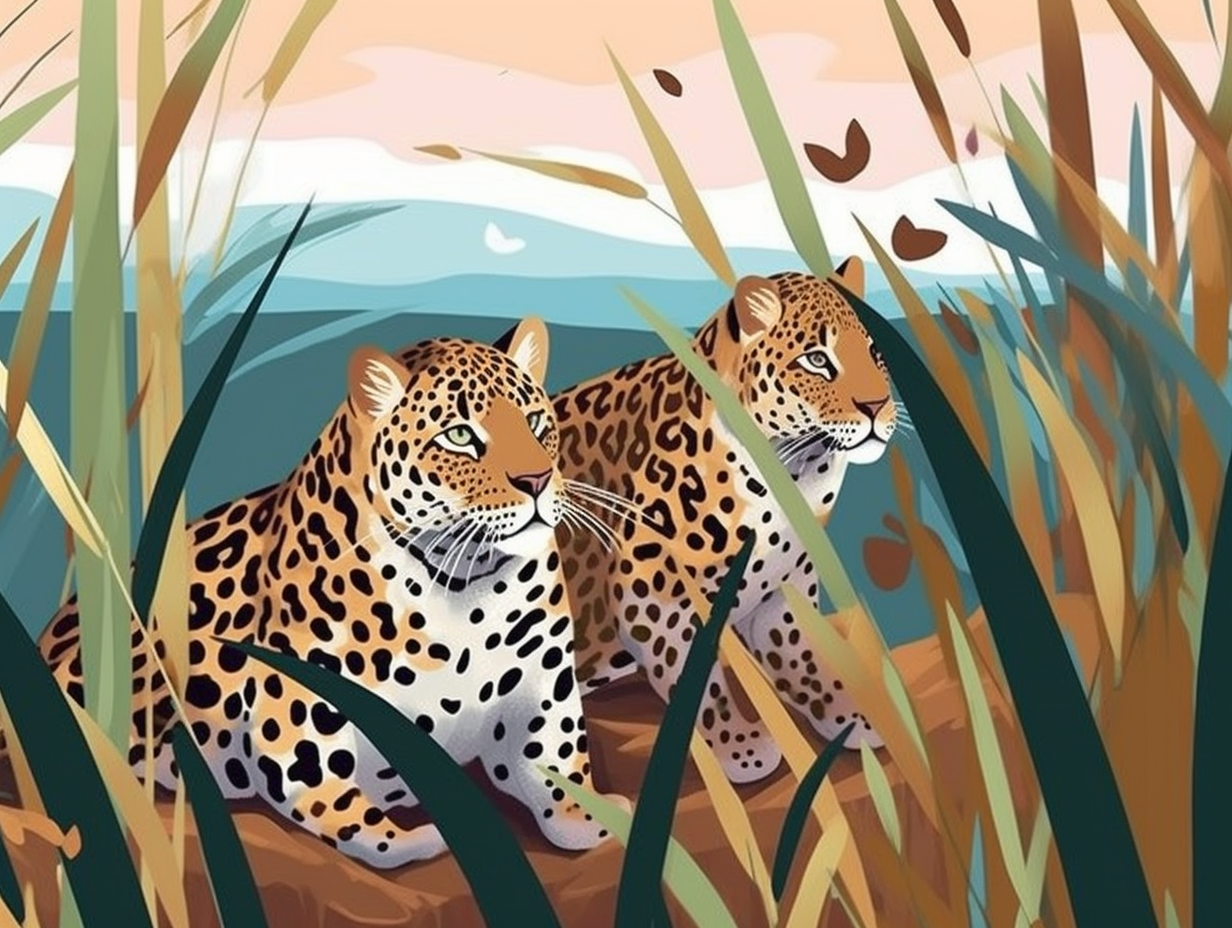Discover the Wild Side: 12 Captivating Fun Facts About Sunda Tigers You Never Knew!

1. Whisker-less Sunda Detectives
Forget Sherlock Holmes and his trusty magnifying glass: Sunda tigers have traded their whisker-detecting skills for a new level of sensory prowess. Boasting shorter whiskers than their feline cousins, these striped sleuths rely heavily on their razor-sharp vision and bat-like hearing to navigate the dense jungles of Sumatra with ease.
Source => treehugger.com
2. Infrasound Tiger DJs
Ever wondered if tigers secretly hold concerts only they can hear? Well, good news: Sunda tigers jam their way through the jungle with ultra-secret sound waves! Hilarious prelude: These stealthy feline DJs use infrasound to communicate over long distances, allowing their sound waves to travel through dense forest vegetation and even mountains.
Source => seaworld.org

Can you believe fewer than 30 South China tigers are left in the wild? 😱 Discover the incredible efforts to save this rare, critically endangered species from vanishing forever due to habitat loss and poaching. 🐅🌏
=> Fun Facts about The-South-China-Tiger
3. Sea-paration Leads to Subspecies
In a classic tiger-style "sea-paration," Sunda tigers decided to have some "me-time" about 12,000 years ago – due to rising sea levels, that is: This fascinating cat-astrophe submergence led them to become genetically isolated and proudly own their distinguished subspecies, striking a stark contrast to their relatives like Bengal, Siberian, Malayan, Indochinese, and South China tigers.
Source => discoveryuk.com
4. Tiger-engineered Knitwear
When Sunda tigers aren't busy learning how to knit with their claws or deciding which grass would make the best umbrella, they're focused on the real deal: finding their perfect patch of protected heartlands. Dating and mingling in these crucial areas is what helps increase their numbers, and WWF's clever plan, called the "TX2 initiative", aims to double tiger populations by 2022. So, let's all raise a paw for Sumatra, home to the most stylish tiger-engineered knitwear – and five oh-so-important heartlands!
Source => worldwildlife.org

5. Doubling Dating Odds with TX2
Who knew tigers were into doubling their dating odds? Well, at least for the Sunda tigers of Sumatra, their climb up the social ladder is more about numbers than a telenovela: The TX2 initiative aims to double the number of wild Sunda tigers by 2022, with WWF working tirelessly to protect and manage their heartlands and breeding grounds, including the audaciously named Thirty Hills, simultaneously saving orangutans, Asian elephants, and local communities from the impending doom of logging concessions.
Source => worldwildlife.org
6. WWF Wrestlers & Sunda Tigers
Did you hear about the Sunda tiger's new hobby? They love hanging out with their pals, the WWF wrestlers, in a Sumatran ring full of camera traps and land planners: In all seriousness, the Sunda tigers are found mainly in Sumatra, where WWF works tirelessly to secure their critical habitats through land-use planning and conservation programs. Additionally, they use camera traps in central Sumatra to conduct innovative research on the tigers' population and habitat use, ultimately identifying vital wildlife corridors that need protection to ensure their survival and the success of TX2 – the ambitious plan to double the global wild tiger population by 2022.
Source => worldwildlife.org
7. Tiger Matchmakers at WWF
Forget tiger moms, we've got tiger matchmakers on the prowl: The WWF is diligently working to double the Sunda tiger population by 2022 through the TX2 initiative – protecting their romantic heartlands in Sumatra, managing 100,000 acres of forest that's also home to orangutans and Asian elephants, conducting state-of-the-art research with camera traps, and securing vital wildlife corridors. Love is in the air and on the ground!
Source => worldwildlife.org
8. Furrensic Marking Experts
Forget fingerprinting, meet the furrensic experts of the animal kingdom: Sunda tigers have distinct markings on their foreheads that act like unique IDs, allowing researchers to track and study individual tigers in the wild!
Source => zooatlanta.org
9. Generous Big Cats Share Meals
Whoever said "cat fights" were a feline thing clearly hasn't met the Sunda tigers: these majestic striped fluffs display the kind of camaraderie that would put neighborhood barbecues to shame, openly sharing their meals with other nearby tigers from distinct families when food is scarce. No forks and knives needed, just a dash of generosity among these big cats!
Source => discoveryuk.com

10. Sumatra's Flashy Feline Supermodel
If the Flash had a feline cousin, it would be the Sunda tiger, sporting fancy pinstripes and acing catwalks with the grace and nonchalance of a supermodel: Sumatran tigers can zip around at astonishing speeds of up to 65 km/hour, are the smallest of all tiger subspecies, and bear uniquely dark and closely-spaced stripes that rival human fingerprints in their distinctiveness. While weighing up to 140 kg and stretching 2.5 meters long, they're also remarkable for their expansive taste in real estate, calling for a whopping 25,000 hectares per individual. Sadly, these natural marvels face threats from both poaching and human conflict, making it vital for conservation efforts to protect their habitats and boost their numbers.
Source => indonesia.wcs.org
11. Ecological Balance Sheet Tigers
Whoever said tigers can't be accountants clearly never met the Sunda tiger: These striped marvels of the feline world help keep Sumatra's ecological balance sheet in check, actively contributing to the TX2 initiative that aims to double the global tiger population by 2022! As wild investors in this tiger market, WWF uses camera traps and cutting-edge research to protect these elusive auditors, keeping tabs on their population size, distribution, and habitat usage in central Sumatra's vital wildlife corridors.
Source => worldwildlife.org
12. Wrestling Sunda Tiger Cubs
Move over, WWE: the real wrestling superstars are Sunda tiger cubs! These fur-ocious little heavyweights are known to practice their hunting skills with a playful smackdown, where they learn to be the masters of the "jungle ring": However, don't be fooled by their antics. The real learning begins around 18 months, when their permanent canines come in, allowing them to hunt effectively and secure their spot as top predators.
Source => conservewildcats.org








